“100 Flowers That Start with N” is a comprehensive guide for flower enthusiasts and gardeners. This collection showcases a diverse array of flowers, each beginning with the letter ‘N’. From the elegant Narcissus to the vibrant Nasturtium, these flowers represent a broad spectrum of colors, shapes, and fragrances. Whether you’re looking to enhance your garden, create stunning floral arrangements, or simply expand your botanical knowledge, this list offers valuable insights into some of nature’s most captivating blooms.
Narcissus

- Narcissus: A genus of predominantly spring perennial plants, known for their trumpet-shaped flowers, commonly known as daffodils.
Nemesia

- Nemesia: A genus of annuals and perennials with a wide variety of colorful, fragrant flowers that bloom in cooler weather.
Nepeta

- Nepeta: Commonly known as catmint, it features aromatic foliage and spikes of blue or purple flowers, often attracting cats.
Nolana

- Nolana: A genus of flowering plants native to South America, known for their bell-shaped flowers and trailing growth habit.
Nandina

- Nandina: Also known as heavenly bamboo, this shrub has colorful foliage that changes with the seasons and clusters of small white flowers.
Nemophila

- Nemophila: Known as baby blue eyes, these annual plants produce delicate, cup-shaped blue flowers with white centers.
Nierembergia

- Nierembergia: Also known as cupflower, it features small, trumpet-shaped flowers, typically in shades of blue, purple, or white.
Nicotiana

- Nicotiana: Commonly called flowering tobacco, these plants produce tubular, often fragrant flowers that bloom in the evening.
Nigella

- Nigella: Known as love-in-a-mist, it has feathery foliage and unique flowers surrounded by a mist of fine, lacy bracts.
Nymphaea

- Nymphaea: Water lilies, renowned for their floating leaves and striking, fragrant flowers that bloom on the water’s surface.
Nyssa

- Nyssa: Known as tupelo, these trees are appreciated for their brilliant fall foliage and are often found in wetlands.
Nuttallanthus

- Nuttallanthus: A small genus of flowering plants in the plantain family, commonly known as blue toadflax.
Nolana Paradoxa

- Nolana Paradoxa: A trailing plant with bell-shaped, blue to lavender flowers, native to coastal regions of South America.
Nolana Atriplicifolia

- Nolana Atriplicifolia: Known for its attractive, funnel-shaped flowers and tolerance to dry, sandy soils.
Nolana Incana

- Nolana Incana: Features silvery foliage and bright blue flowers, commonly found in arid coastal areas.
Nolana Pseudonapellus

- Nolana Pseudonapellus: A lesser-known species with distinctive blue or purple flowers and a spreading habit.
Nierembergia Hippomanica

- Nierembergia Hippomanica: A species with delicate, cup-shaped white to purple flowers, ideal for rock gardens and borders.
Nicandra

- Nicandra: Known as the apple of Peru, it produces pale blue, bell-shaped flowers and distinctive lantern-like seed pods.
Nicandra Physaloides

- Nicandra Physaloides: Features bell-shaped flowers and is often grown as an ornamental or used in traditional medicine.
Nemophila Menziesii

- Nemophila Menziesii: Also called baby blue eyes, it has sky-blue flowers with white centers, popular in wildflower gardens.
Nemophila Insignis

- Nemophila Insignis: Another variety of baby blue eyes, known for its striking blue flowers with distinctive markings.
Nuphar

- Nuphar: Known as yellow water-lilies, they have heart-shaped leaves and bright yellow, cup-shaped flowers.
Nuphar Lutea
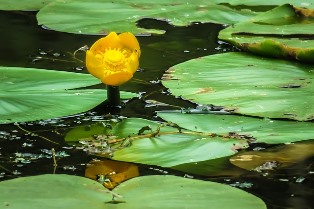
- Nuphar Lutea: The yellow pond lily, features large, yellow flowers and broad, floating leaves, commonly found in calm waters.
Nasturtium

- Nasturtium: An annual plant with round leaves and vibrant, edible flowers, often used in salads for their peppery flavor.
Nasturtium Officinale

- Nasturtium Officinale: Commonly known as watercress, it’s a semi-aquatic plant with small white flowers and edible leaves.
Nasturtium Aquaticum

- Nasturtium Aquaticum: A variety of watercress, known for its peppery-flavored leaves and small white flowers.
Neomarica
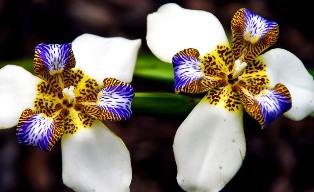
- Neomarica: Also known as walking iris, these plants produce striking flowers on tall stems and can propagate from fallen flower stems.
Neomarica Gracilis

- Neomarica Gracilis: A species of walking iris with delicate, white and blue flowers and a clumping growth habit.
Neomarica Northiana

- Neomarica Northiana: Known for its large, exotic flowers with a unique pattern of white, purple, and yellow.
Neomarica Caerulea

- Neomarica Caerulea: Features striking blue flowers and sword-like foliage, ideal for adding a tropical touch to gardens.
Nemastylis

- Nemastylis: A genus of small, perennial plants known for their star-shaped flowers, typically blue or purple.
Nemastylis Geminiflora

- Nemastylis Geminiflora: Also known as celestial lily, it produces starry blue flowers on slender stems in spring.
Nemastylis Floridana
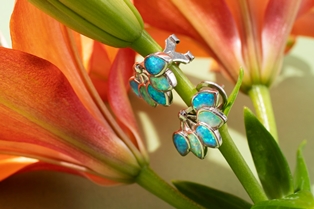
- Nemastylis Floridana: A rare species with bright blue flowers, native to Florida’s pine rocklands.
Nigritella

- Nigritella: A genus of orchids, commonly known as vanilla orchids, with fragrant, dark red to blackish flowers.
Nigritella Nigra
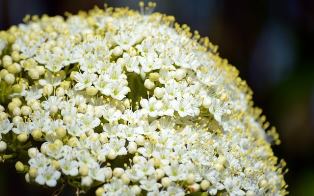
- Nigritella Nigra: Known as black vanilla orchid, it produces small, dark purple to black flowers with a sweet vanilla scent.
Nigritella Rubra

- Nigritella Rubra: Features red to dark pink flowers and a pleasant fragrance, often found in alpine meadows.
Nelumbo

- Nelumbo: A genus of aquatic plants, commonly known as lotus, revered for their large, fragrant flowers and sacred symbolism.
Nelumbo Nucifera

- Nelumbo Nucifera: The sacred lotus, produces large, pink or white flowers and is significant in Asian cultures.
Nelumbo Lutea

- Nelumbo Lutea: Known as American lotus, it has pale yellow flowers and large, round leaves that float on water.
Narcissus Tazetta

- Narcissus Tazetta: Known as paperwhite, it features clusters of small, fragrant white flowers and narrow leaves.
Narcissus Pseudonarcissus

- Narcissus Pseudonarcissus: Commonly known as the wild daffodil, it has yellow trumpet-shaped flowers and is often found in woodlands.
Narcissus Jonquilla

- Narcissus Jonquilla: Known as jonquil, it produces fragrant yellow flowers in clusters and has slender, rush-like leaves.
Narcissus Bulbocodium
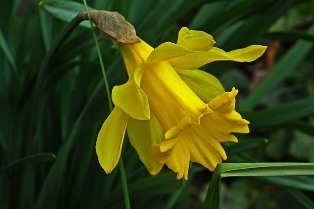
- Narcissus Bulbocodium: Also called hoop-petticoat daffodil, it has distinctive, funnel-shaped flowers and grass-like leaves.
Narcissus Cyclamineus

- Narcissus Cyclamineus: Features nodding, trumpet-shaped flowers with swept-back petals, resembling cyclamen flowers.
Narcissus Papyraceus
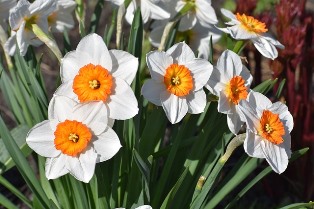
- Narcissus Papyraceus: Known as paperwhite narcissus, it produces clusters of small, highly fragrant white flowers.
Narcissus Triandrus

- Narcissus Triandrus: Also called angel’s tears, it has multiple, drooping, bell-shaped flowers with reflexed petals.
Narcissus Poeticus

- Narcissus Poeticus: Known as poet’s daffodil, it features fragrant, white flowers with a small, red-rimmed yellow cup.
Nothoscordum
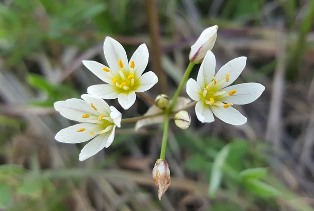
- Nothoscordum: A genus of bulbous plants with star-shaped flowers, often resembling small onions or garlic.
Nothoscordum Bivalve

- Nothoscordum Bivalve: Known as false garlic, it produces small, white, star-shaped flowers and grass-like foliage.
Nothoscordum Inodorum
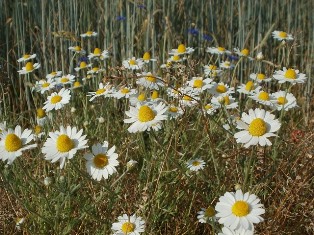
- Nothoscordum Inodorum: A species with small, white flowers and an onion-like bulb, but without the strong odor.
Nothoscordum Gracile

- Nothoscordum Gracile: Features slender stems and small, white flowers, often found in grasslands and open woodlands.
Nothoscordum Dialystemon

- Nothoscordum Dialystemon: Known for its yellow, star-shaped flowers and grassy leaves, found in temperate regions.
Nephrolepis

- Nephrolepis: A genus of ferns, commonly known as Boston ferns, with arching fronds and a lush, green appearance.
Nephrolepis Exaltata

- Nephrolepis Exaltata: The Boston fern, popular as a houseplant for its feathery, arching fronds and air-purifying qualities.
Nephrolepis Cordifolia

- Nephrolepis Cordifolia: Known as tuberous sword fern, it has upright fronds and produces small, tuber-like structures on its roots.
Nephrolepis Obliterata
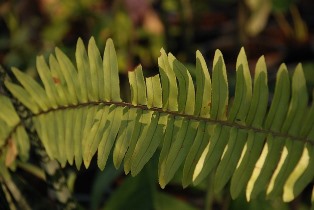
- Nephrolepis Obliterata: Also called the Kimberly Queen fern, it has stiff, upright fronds and is tolerant of varying light conditions.
Nelumbium

- Nelumbium: An older name for the genus Nelumbo, referring to the lotus plants known for their large, showy flowers.
Nelumbium Speciosum

- Nelumbium Speciosum: Another name for Nelumbo nucifera, the sacred lotus with its large, pink or white flowers.
Nelumbium Luteum

- Nelumbium Luteum: Synonymous with Nelumbo lutea, the American lotus with pale yellow flowers.
Nierembergia Rivularis
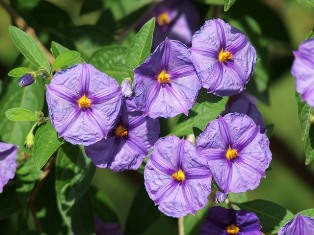
- Nierembergia Rivularis: A species with white, cup-shaped flowers and a creeping growth habit, suitable for ground cover.
Nierembergia Scoparia

- Nierembergia Scoparia: Known for its purple, star-shaped flowers and compact, bushy growth.
Nierembergia Repens
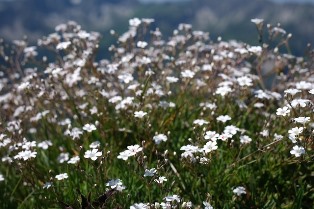
- Nierembergia Repens: A ground-hugging species with small, white to purple flowers, ideal for rock gardens.
Nigella Damascena
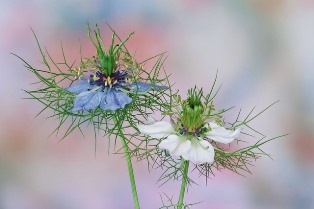
- Nigella Damascena: Known as love-in-a-mist, it has blue flowers surrounded by a delicate, fern-like bract, giving a misty appearance.
Nigella Sativa

- Nigella Sativa: Also called black cumin, it produces small white or blue flowers and is known for its edible seeds used in cooking.
Nigella Hispanica

- Nigella Hispanica: Features striking, deep blue flowers with prominent stamens, native to the Iberian Peninsula.
Nigella Garidella

- Nigella Garidella: Known for its unique, spiky blue flowers and ornamental seed pods.
Nigella Arvensis

- Nigella Arvensis: A species with small, pale blue flowers and delicate foliage, often found in fields and meadows.
Nerine

- Nerine: A genus of flowering plants, commonly known as Guernsey lilies, with striking, lily-like flowers in vibrant colors.
Nerine Bowdenii

- Nerine Bowdenii: Known for its bright pink, lily-like flowers that bloom in autumn, adding color to gardens.
Nerine Sarniensis
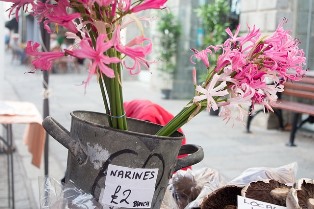
- Nerine Sarniensis: Features scarlet-red flowers with a metallic sheen, often grown for its ornamental value.
Nerine Masoniorum

- Nerine Masoniorum: A smaller species with delicate, pink flowers and a grass-like appearance.
Nerine Fothergillii

- Nerine Fothergillii: Known for its striking, bright red flowers and long-lasting blooms.
Nerine Undulata

- Nerine Undulata: Features wavy, pink petals and is prized for its late-season blooms.
Nomocharis Aperta

- Nomocharis Aperta: Produces large, open, star-shaped flowers with a delicate pink hue, often found in alpine regions.
Nomocharis Basilissa
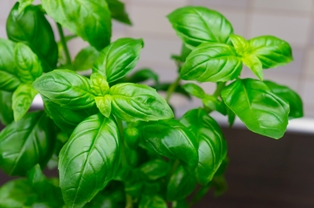
- Nomocharis Basilissa: Known for its pink to white flowers with a prominent central marking, native to mountainous areas.
Nomocharis Forbesii

- Nomocharis Forbesii: Features pale pink flowers with dark spots, often found in the wild in China.
Nomocharis Speciosa

- Nomocharis Speciosa: Known for its large, pink or white flowers with distinctive markings, often cultivated for its beauty.
Nomocharis Saluenensis
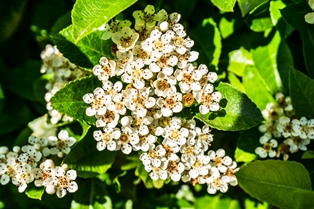
- Nomocharis Saluenensis: Features attractive, star-shaped flowers with a delicate pink hue and dark spots.
Nemacladus
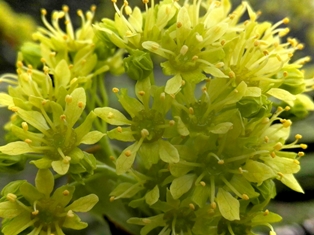
- Nemacladus: A genus of small annual plants with tiny, delicate flowers, often found in arid regions.
Nemacladus Sigmoideus

- Nemacladus Sigmoideus: Known for its small, white flowers with a distinctive zigzag stem, native to dry habitats.
Nemacladus Longiflorus

- Nemacladus Longiflorus: Features tiny, white flowers on long, slender stems, commonly found in desert areas.
Nemacladus Gracilis

- Nemacladus Gracilis: A species with small, delicate flowers and a graceful, slender growth habit.
Nemacladus Twisselmannii

- Nemacladus Twisselmannii: Known for its minute, white flowers and is often found in rocky, mountainous regions.
Nemacladus Californicus

- Nemacladus Californicus: Features small, white flowers and is native to the Californian desert areas.
Nemacladus Orientalis

- Nemacladus Orientalis: Known for its tiny, white flowers and delicate appearance, typically found in arid environments.
Nerium

- Nerium: A genus of evergreen shrubs, commonly known as oleander, with clusters of showy, fragrant flowers.
Nerium Oleander

- Nerium Oleander: Known for its large, pink, white, or red flowers and is widely grown as an ornamental shrub.
Nerium Indicum

- Nerium Indicum: Features vibrant, fragrant flowers and is often used in traditional medicine.
Nymphoides

- Nymphoides: A genus of aquatic plants with floating leaves and small, fringed flowers, resembling water lilies.
Nymphoides Indica

- Nymphoides Indica: Known as water snowflake, it has delicate, white, fringed flowers that float on the water’s surface.
Nymphoides Peltata

- Nymphoides Peltata: Also called yellow floating heart, it features bright yellow, fringed flowers and round leaves.
Nymphoides Aquatica
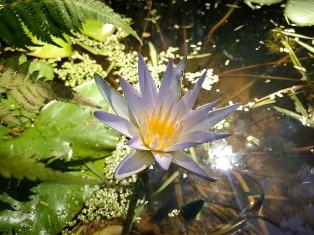
- Nymphoides Aquatica: Known for its floating, heart-shaped leaves and small, white flowers, commonly found in calm waters.
Nymphoides Humboldtii

- Nymphoides Humboldtii: Features large, white, fringed flowers and is often found in tropical water bodies.
Nymphoides Hydrocharioides

- Nymphoides Hydrocharioides: Known for its floating leaves and small, yellow flowers, often found in ponds and lakes.
Nymphoides Spinulosperma

- Nymphoides Spinulosperma: A lesser-known species with floating leaves and small, fringed flowers.
Nymphoides Coronata

- Nymphoides Coronata: Features delicate, white flowers and is commonly found in freshwater habitats.

